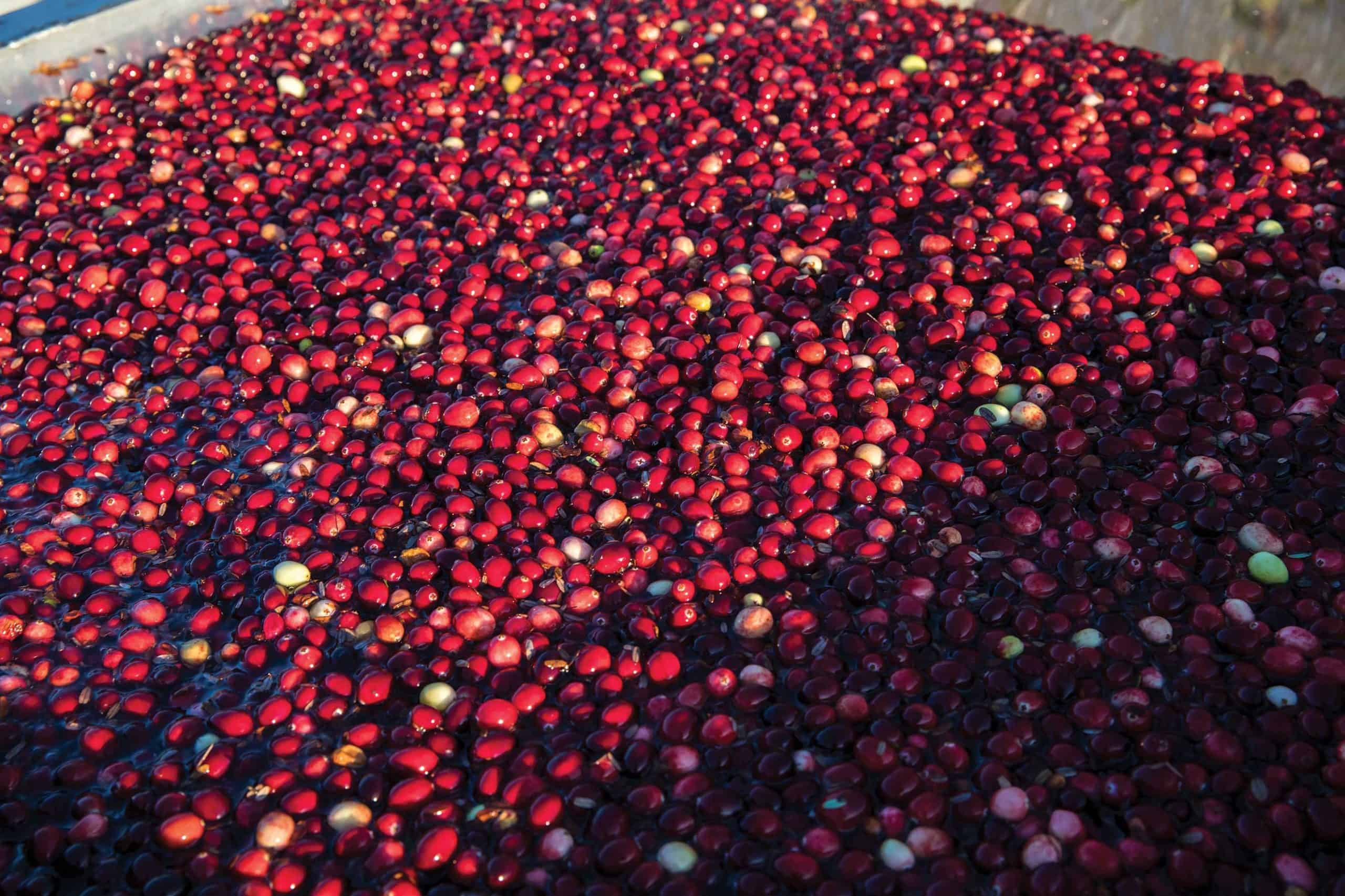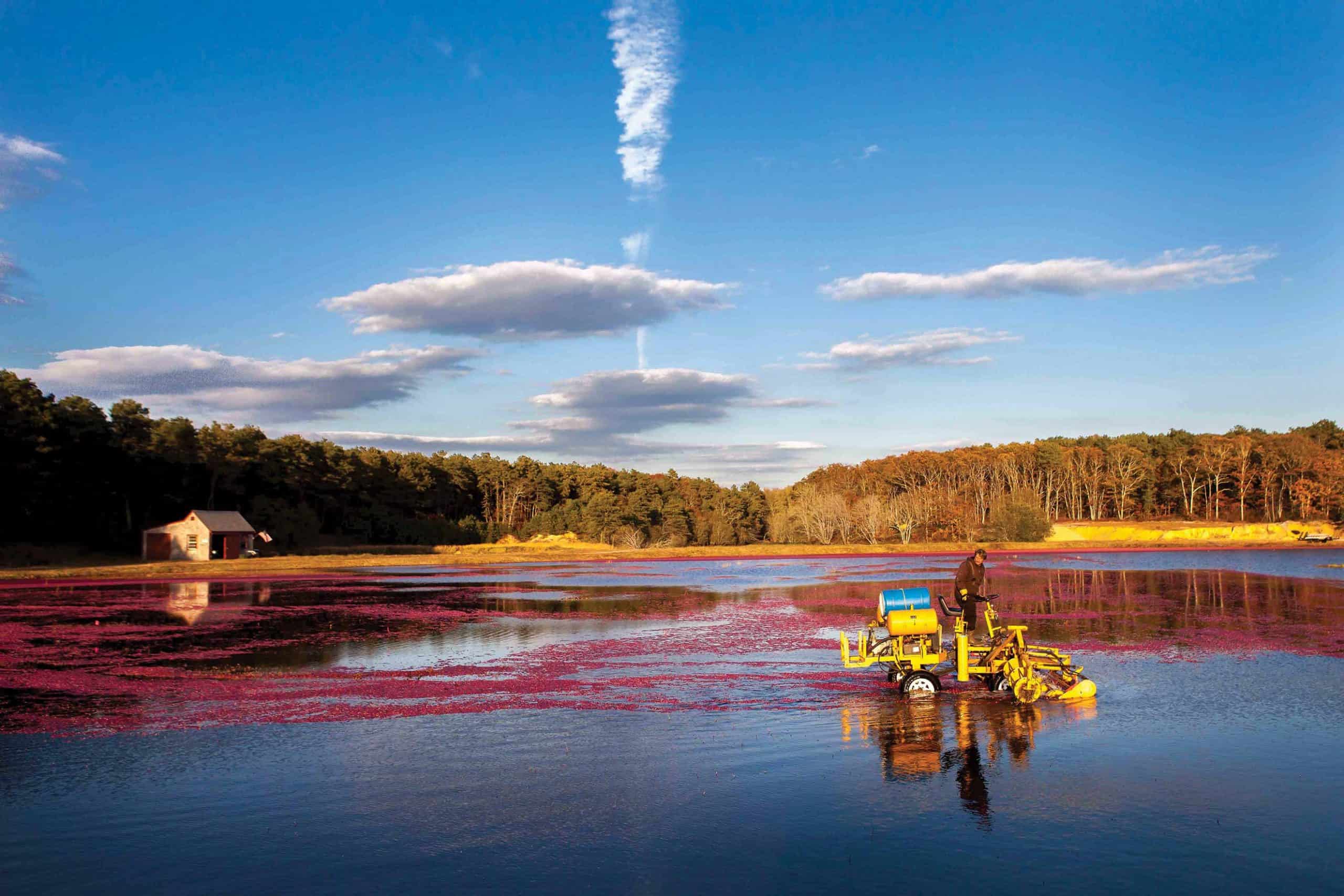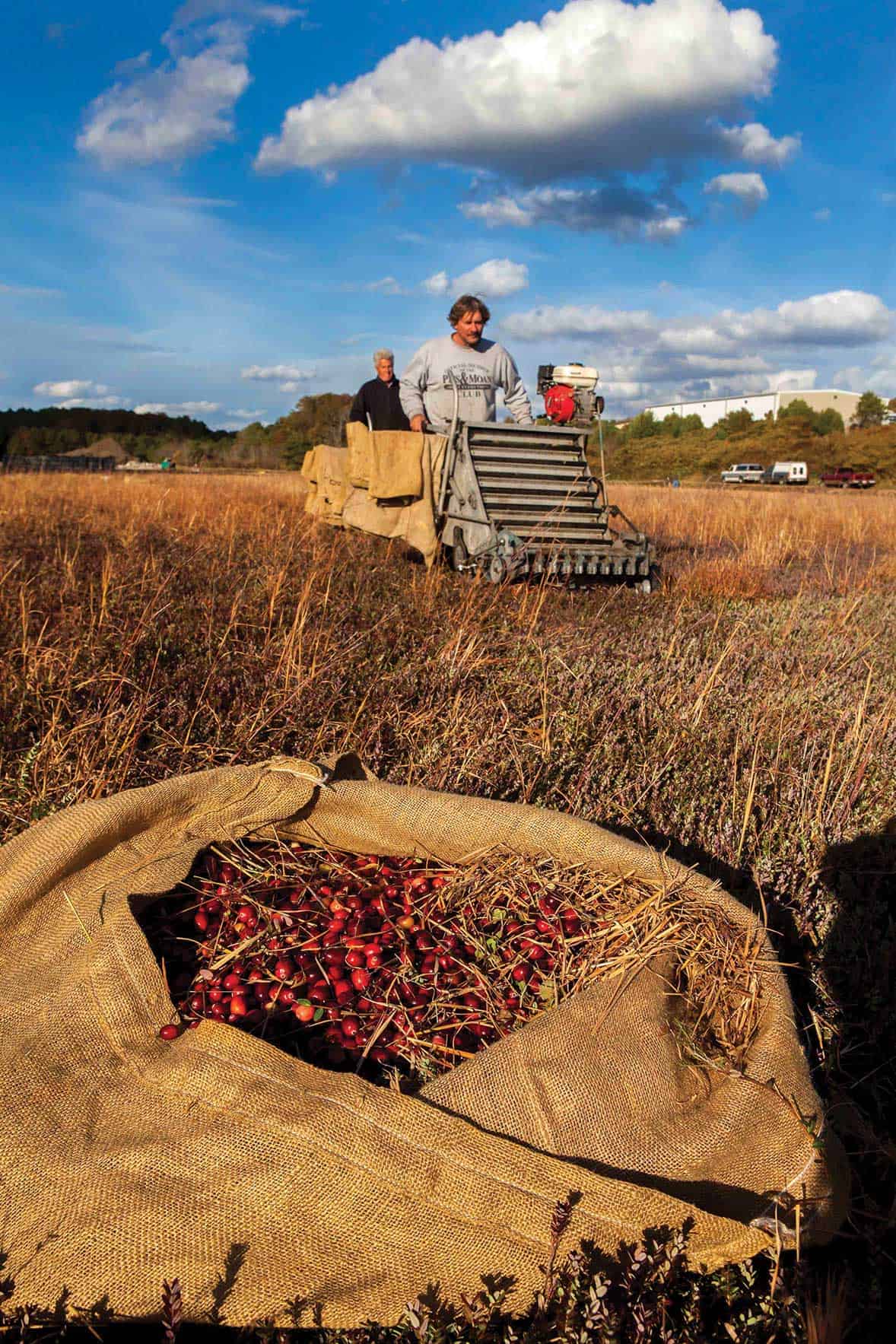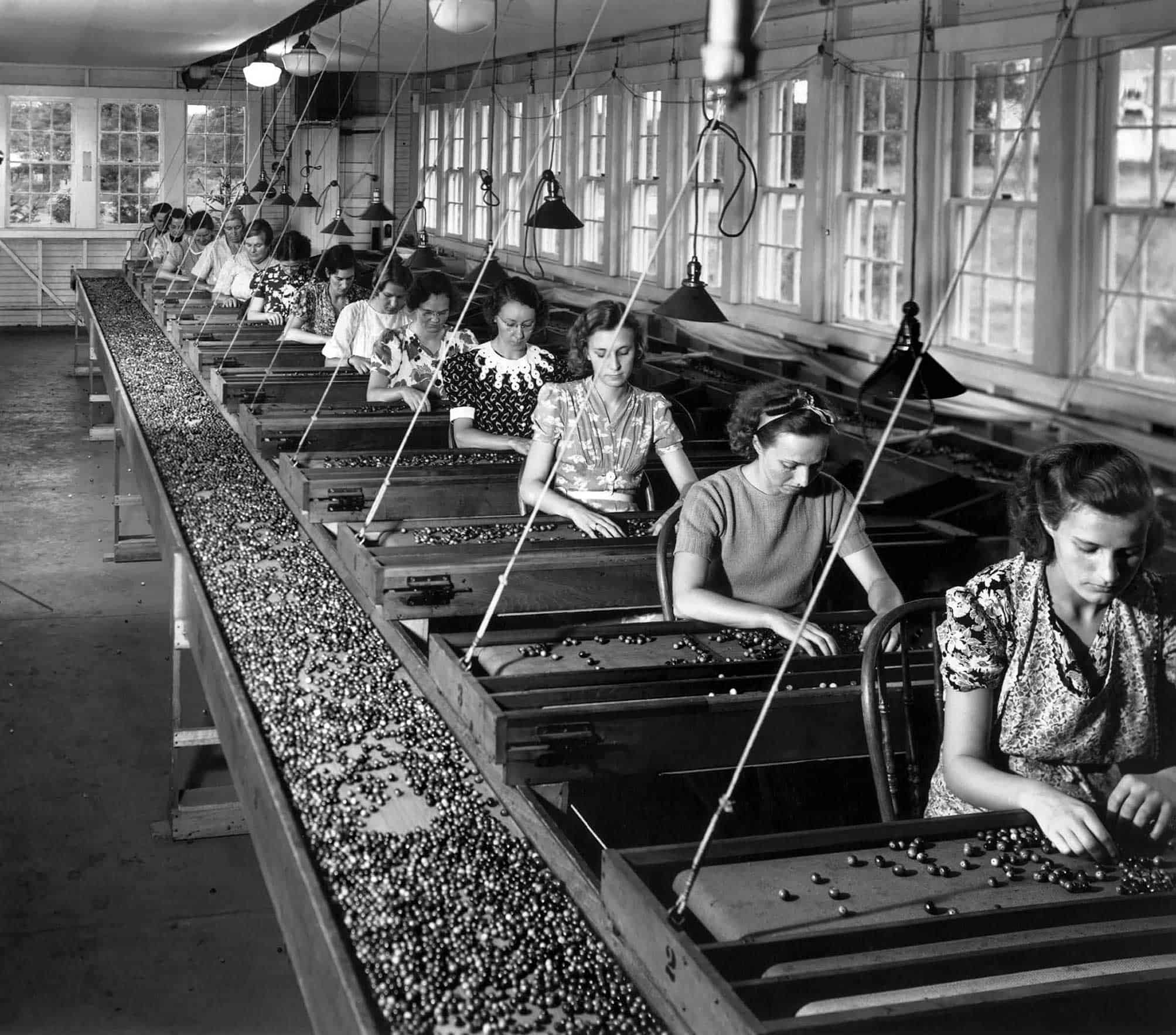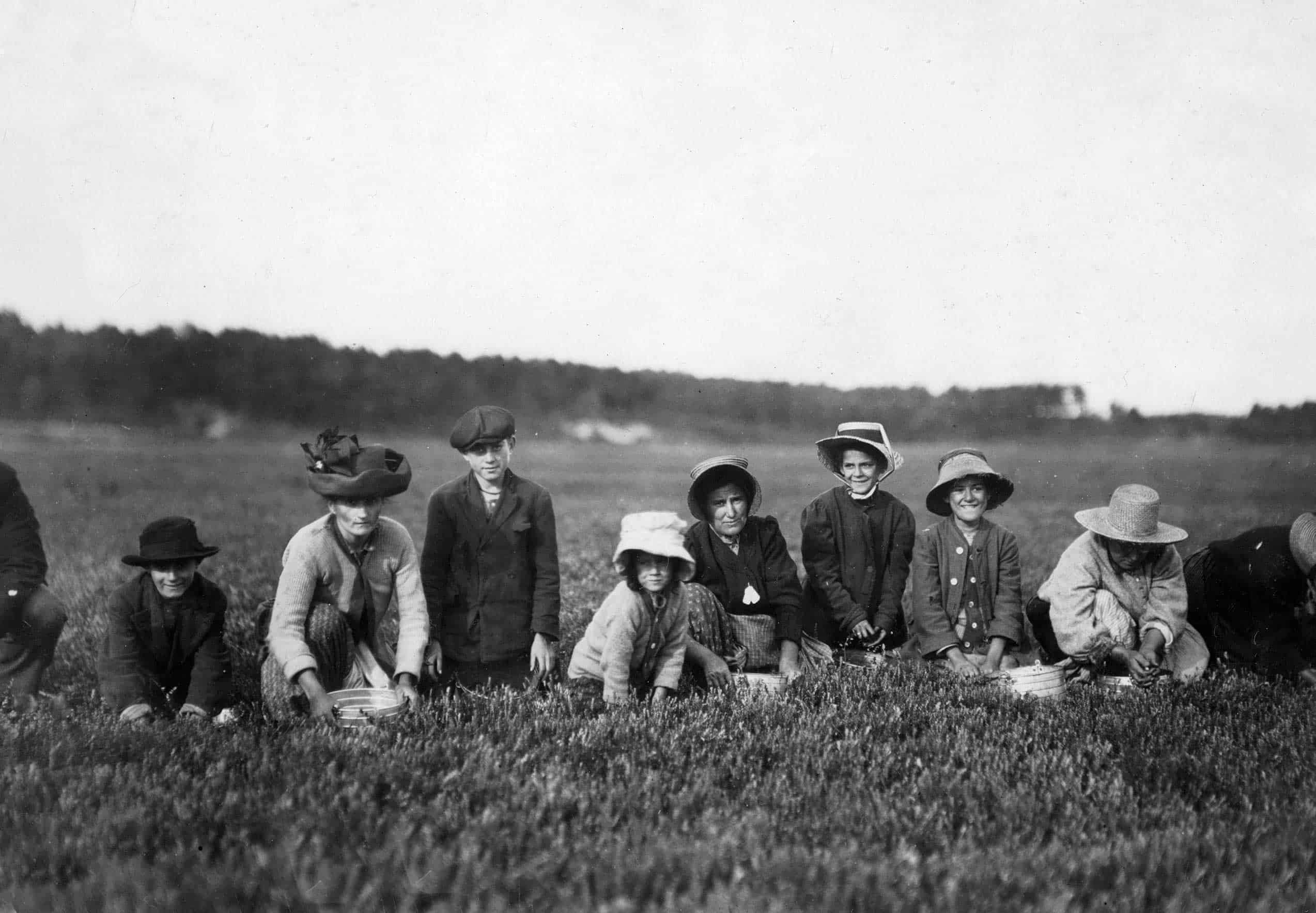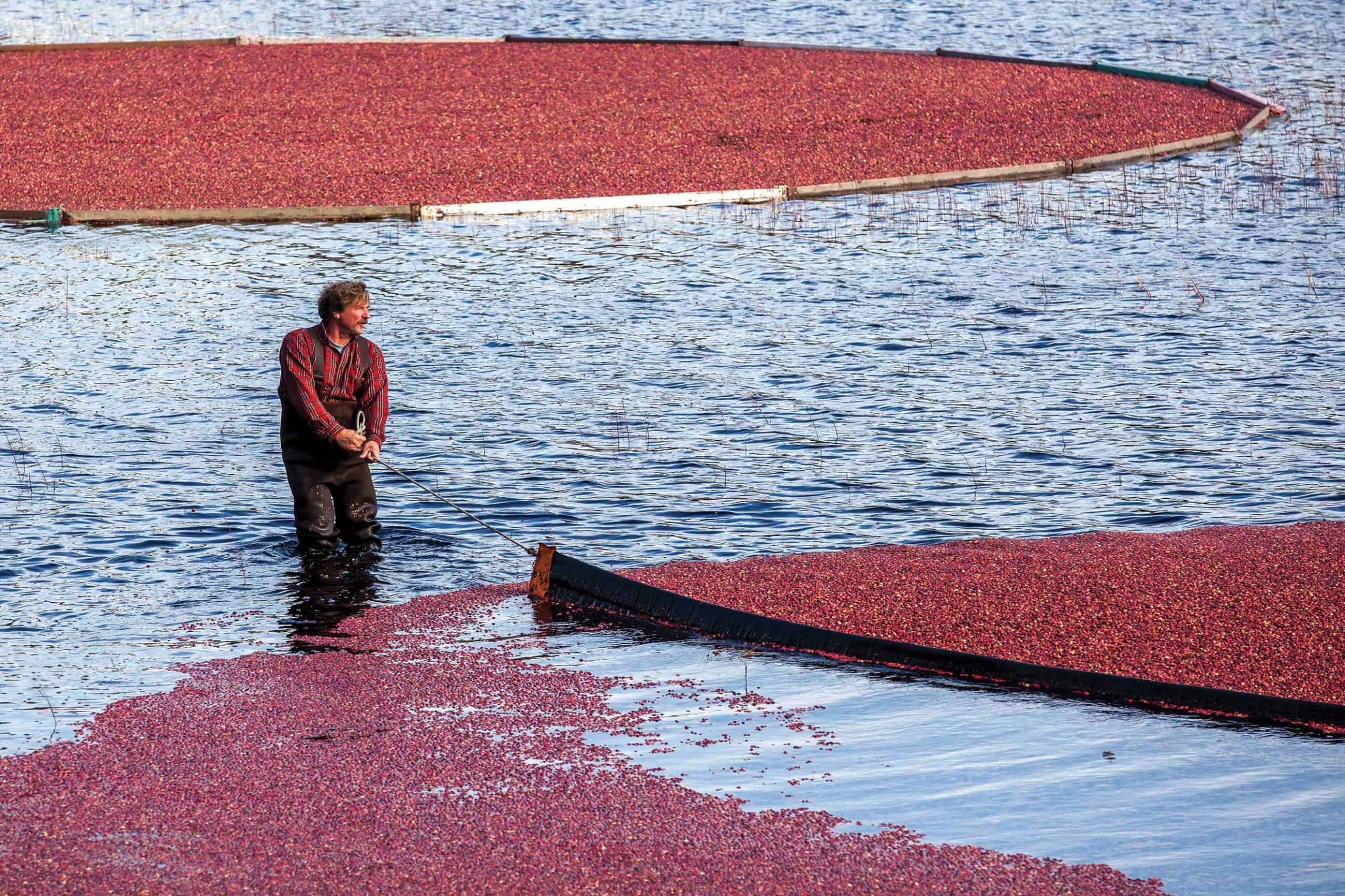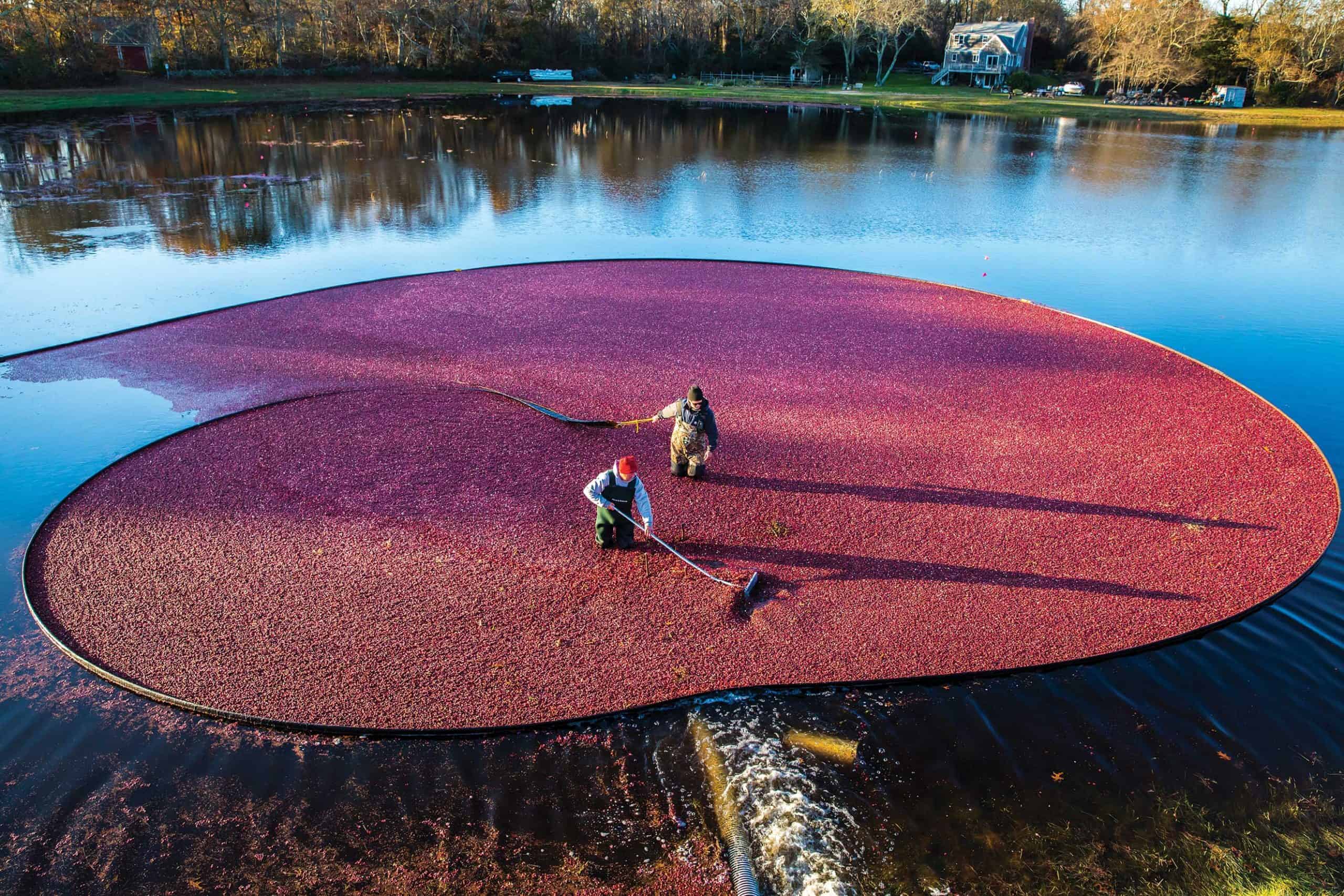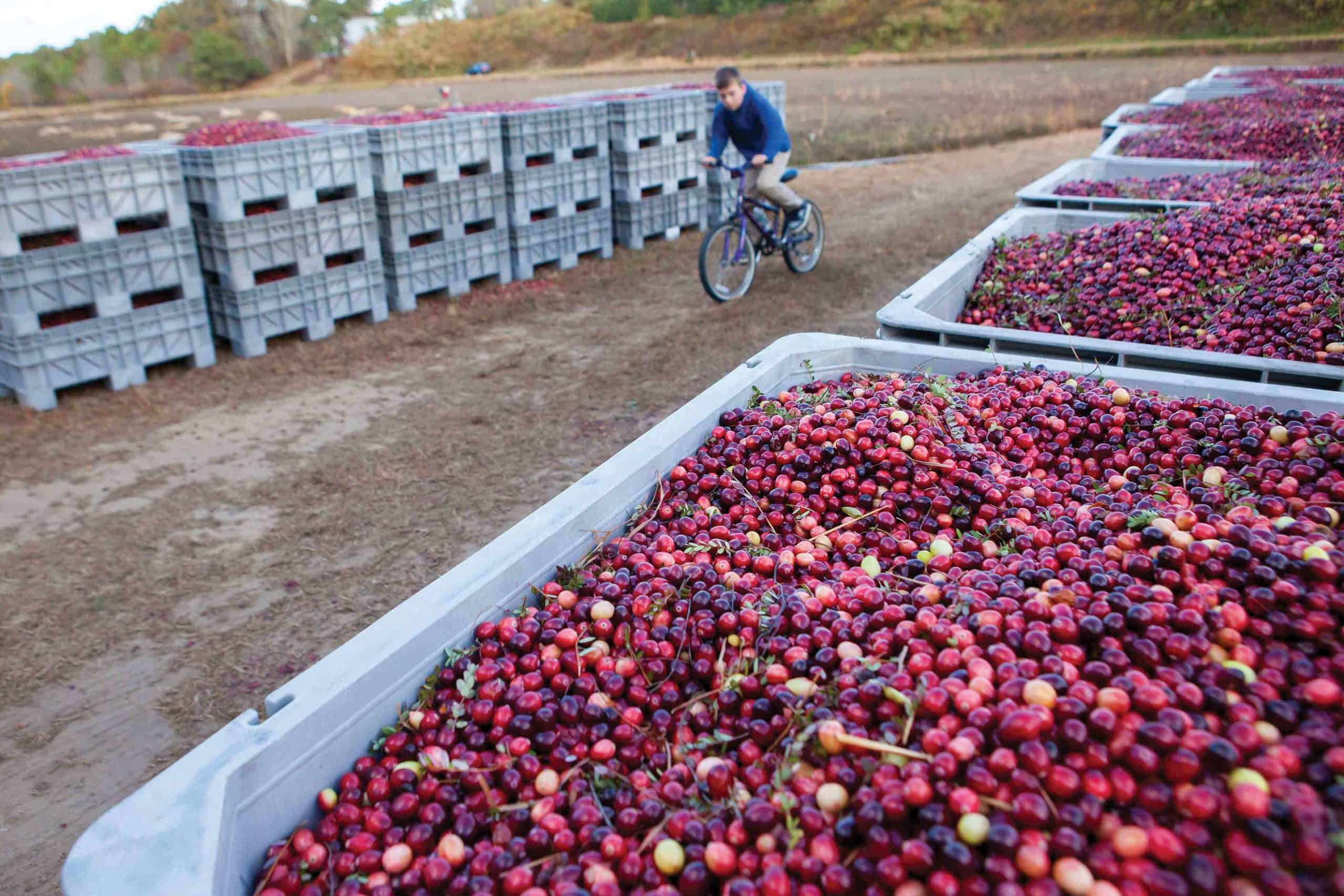Massachusetts’ bog-born industry fuels its economy
Written by Brian Wick, Executive Director, Cape Cod Cranberry Growers’ Association
Nestled within the towns and villages of Southeastern Massachusetts are more than 13,000 acres of cranberry bogs and 60,000 acres of total land holdings that together comprise the region’s vibrant cranberry industry. These bogs are the workplaces of the more than 300 cranberry growing families. These farmers have nurtured and cultivated these wetlands for generations, contributing to their communities, providing shelter and habitat for hundreds of plants and animal species and helping to preserve the beautiful New England landscape.
The North American cranberry, vaccinium macrocarpon, is our country’s native superfruit, and the tiny red berries are the number one food crop in Massachusetts. These perennial plants have grown in Southeastern Massachusetts and in isolated pockets throughout the Northeast since the glaciers receded tens of thousands of years ago.
A Fruitful History
Wild cranberries were embraced by the native people of Massachusetts for diverse purposes. An important component of their diet, the fruit also served as a food preservative, natural dye for their clothes and as a healing aid to help fight fever, swelling and infection. When Europeans settled in the region, the newcomers were introduced to these versatile berries. Many were familiar with European cranberry varieties, which flourished in the boggy regions of southern England and in low-lying Netherlands. Although similar to the North American variety, this berry was a distinctly different species. The English had many names for the fruit, but “craneberries” was the most common, a nod to the flower’s similarity to the head of a Sandhill crane.
Cranberry cultivation was established in 1816, shortly after Revolutionary War veteran Captain Henry Hall, of Dennis, Massachusetts, took note that the wild cranberries in the bogs behind his house thrived best when covered by blown over sand from winter storms. Captain Hall began transplanting cranberry vines and manually spreading sand on them. Hall’s technique was widely recognized and implemented by growers increasingly throughout the 19th century.
While initially criticized for tinkering with vines, local landowners eagerly converted their swamps, wetlands and wet meadows into cranberry bogs. The idea of growing and selling cranberries commercially caught on, originating on Cape Cod. By the mid-1800s, the industry had expanded to the South Shore and South Coast regions and by 1900, cranberry farming acreage had tripled in the state. “Cranberry Fever” struck and the industry boomed. As late as the 1920s, the annual cranberry harvest remained so vital to local and state economies that local children could be excused from school to work the bogs during harvest season.
How They Grow
A true wetland plant, cranberries require a special combination of environmental factors in order to grow, including acidic soil, iron-rich fresh water and an extended chilling (dormancy) period. Standing just a few inches tall, the vines and their root system grow rather shallow. The cranberry beds consist of a top sand layer, a lower layer of peat that holds water and serves as a natural filter, and a base layer made of impermeable gravel or clay.
Commercial cranberry bogs utilize a system of uplands, wetlands, ditches, flumes, ponds and other water sources in order to efficiently move water on or off the bogs. During the winter, perennial cranberry vines go dormant and the leaves turn a rich, dark red color. When temperatures drop below 20 degrees, the bogs are flooded with about an 8-inch layer of fresh water (enough to cover the vines). This insulating blanket of liquid protects the plants and root system from damage. If a thick layer of ice forms, growers drive across with a hopper full of sand, spreading it across the bog. When the ice melts in spring, the sand filters down to the bog surface. Sand acts like a natural fertilizer to the plant and helps revitalize the root system. The sand also acts as an effective pest control mechanism by covering insect eggs, weed seeds and fungal spores.
In mid-April, cranberry flower buds begin to swell. The vines emerge from dormancy, returning to their green color from newly generated chlorophyll. During this season, growers are cognizant of the perils that overnight frosts pose to their developing crop. When conditions warrant protection, growers engage their sprinkler irrigation systems, providing enough water to coat the plants. In mid-June, blossoms open and attract honeybees, bumble bees and other native bees for pollination. By early July, the berries begin to form and they continue to grow throughout the summer.
Crimson berries appear in late September, initiating the first wet or dry harvest opportunities. Dry harvested fruit is picked by driving self-propelled machines through the bog and conveying berries into burlap bags. Fresh fruit products are harvested in this manner, but comprise only four percent of all cranberries harvested in Massachusetts. The remainder of each year’s crop is machine-harvested in flooded bogs, which is known as a wet harvest. Industry-specific water reels are driven onto the bogs, separating berries from vines. Once detached, internal air pockets allow the berries to float to the surface. The berries are corralled and pumped from the bog into transport trucks that hold up to 50,000 pounds of berries. Wet-harvested berries are turned into juice, sweetened, dried cranberries and cranberry sauce products.
Cranberry Health Benefits
Cranberries are a superfruit—naturally low in sugar, rich in antioxidants and high in vitamin C. Ccranberries are also loaded with proanthocyanidins (PACs), the unique bioactive compound that contributes to the cranberry’s long list of health accolades. The fruit is recognized for its ability to reduce the incidence of some infections, decrease inflammation and promote heart and digestive health. Thanks to its versatility in the kitchen, this nutrient-dense fruit can be easily incorporated into both sweet and savory dishes.
Preserving Tradition
Having tended to their farms for more than 200 years, local cranberry growers take pride in their roles as farmers, stewards of the environment and business owners in the community. Their commitment to innovation, technological ingenuity and determination has allowed them to keep the farming tradition alive, making it possible for the next generation to enjoy this little, yet powerful, berry.
The Cape Cod Cranberry Growers’ Association represents the cranberry growers of Massachusetts. This member-based trade association strives to assist growers in keeping their farms sustainable for future generations. Learn more about Massachusetts’ state fruit and meet a legacy of growers at cranberries.org.
